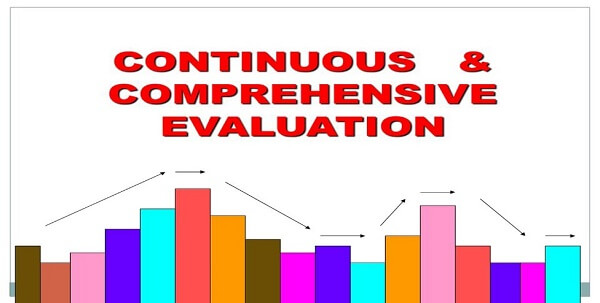What is the full form of CCECCE: Continuous And Comprehensive EvaluationCCE Stands for Continuous And Comprehensive Evaluation. CCE is a system for evaluating students that takes into account every aspect of education. The Central Board of Secondary Education (CBSE) and the state governments of India together developed the Continuous and Complete Evaluation (CCE) system to continuously assess a student's development throughout the academic year. In certain schools, this method of assessment was implemented for sixth through tenth graders as well as for twelfth graders. In the future, the student in the smaller class would have to practice taking the board exam at a younger age. The Right to Education (RTE) Act of India established Continuous and Complete Evaluation (CCE) as an evaluation method in 2009. In accordance with this system, grades, as well as academic performance, were used to replace the previous system's use of student marks. Instead of taking a single large test at the end of the academic year, the goal was to have students take a number of smaller tests throughout the year to lessen their workload. Only factors like behavior, teamwork, originality, firmness, public speaking and work experience were considered when assigning grades to students. In order to demonstrate their potential in other areas, such as the arts, humanities, sports, music, and athletics, students who struggle academically benefit from this. 
Vision of Continuous and Comprehensive Evaluation (CCE)The primary aim of Continuous and Comprehensive Evaluation is to examine every single element of the kids while they are at school. Continuous and Comprehensive Evaluation enables teachers to diagnose a student's deficiencies through a variety of assessment tasks. It also aids in enhancing and upgrading the student's performance by detecting their learning challenges at regular intervals of time. The academic session's starting marks the commencement of this procedure. The Continuous and Comprehensive Evaluation exam scheme gives students the information they need to make an informed decision about their class 11 subjects based on their preferences, academic performance, hobbies, and ability. Additionally, it promotes pupils' emotional intelligence, additional life skills, and critical thinking ability. The Continuous and Comprehensive Evaluation technique is crucial because it aids in the development of students' psychomotor, cognitive, and interpersonal abilities and makes education a student-centered activity. Objectives of Continuous and Comprehensive Evaluation (CCE)
Features of Continuous and Comprehensive Evaluation (CCE)Continuous and Comprehensive Evaluation (CCE) has the qualities listed below:
Functions of Continuous and Comprehensive Evaluation (CCE)Continuous and Comprehensive Evaluation carries out a variety of tasks. Following is a list of some of them:
Meaning of Continuous: The word "continuous" has the meaning of regularity in evaluation. A student's growth is a constant process. Therefore, it is important to regularly evaluate pupils' development. The process of teaching and learning must be fully interwoven with the process of evaluation. One component of CCE is the ongoing, cyclical evaluation of students. The terms "continuous" and "periodic" evaluation features are all included in the phrase. Meaning of Comprehensive: "Comprehensive" is the second phrase connected to CCE. The word "comprehensive" suggests that both the academic and extracurricular achievements of learners are evaluated. Nature of Continuous and Comprehensive EvaluationThe nature of continuous and comprehensive evaluation (CCE) is so extensive that it covers practically every facet of a student's growth. It emphasises the assessment of learner capacities in both academic and co-curricular areas, integrating assessment with the teaching and learning process. Students are inspired and motivated by CCE to adopt a positive outlook. It underlines that teachers' decisions should be based on an unbiased, honest, and objective evaluation. It is a process of ongoing efforts to determine whether children are undergoing desirable changes in keeping with educational goals. Key Advantages of Continuous and Comprehensive Evaluation (CCE):
Next TopicFull Form
|
 For Videos Join Our Youtube Channel: Join Now
For Videos Join Our Youtube Channel: Join Now
Feedback
- Send your Feedback to [email protected]
Help Others, Please Share










